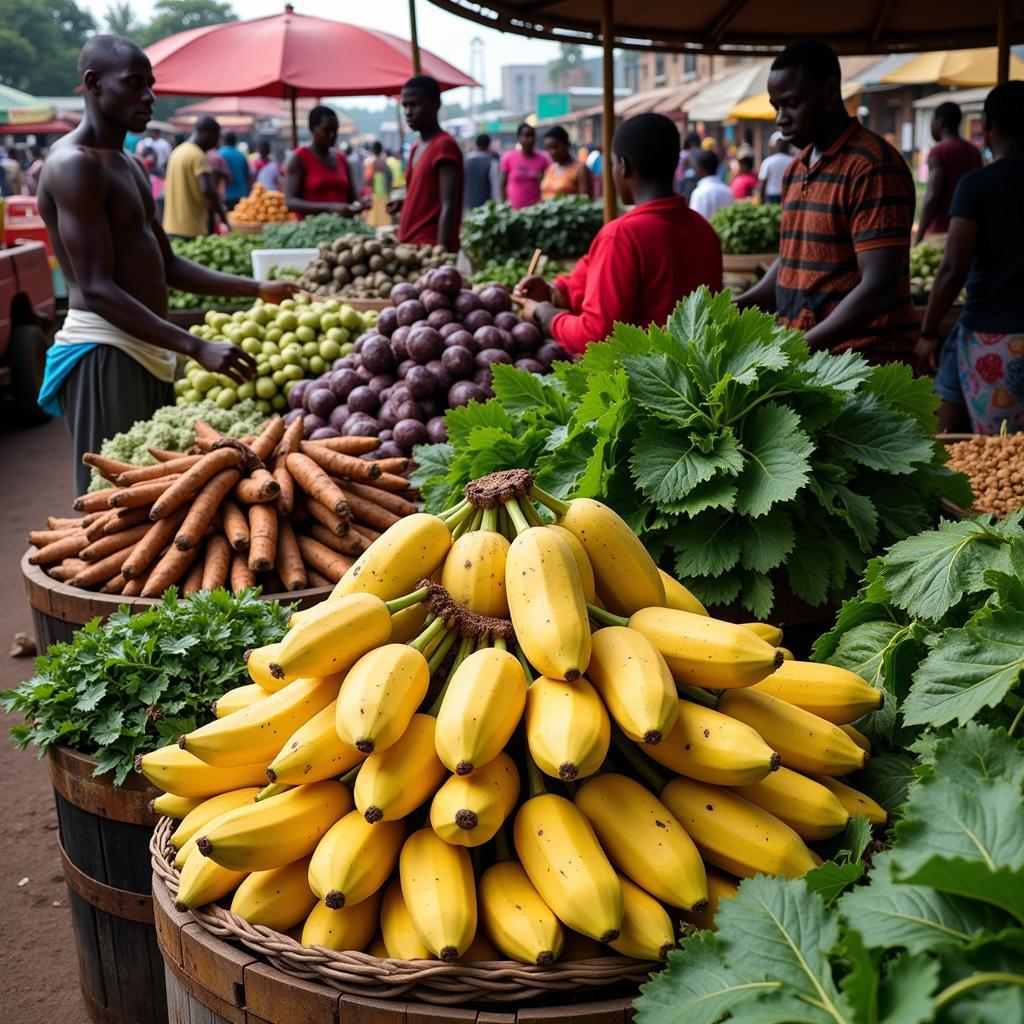Ackee: The National Fruit of Jamaica
Ackee is a unique and delicious fruit that is native to West Africa and is now a staple food in many Caribbean countries, particularly Jamaica, where it’s even considered the national fruit. Its vibrant red color and distinctive appearance make it a striking addition to any dish, and its creamy, nutty flavor adds a delightful complexity to Caribbean cuisine.
What is Ackee?
Ackee ( Blighia sapida ) is a fruit that grows on a tall evergreen tree. The fruit itself is a large, heart-shaped pod with a leathery, bright red rind. Inside, the ackee fruit contains three to four creamy, yellow seeds surrounded by a fleshy aril that is the edible part.
The History of Ackee
Ackee’s journey from West Africa to the Caribbean is a fascinating one. The fruit was likely introduced to Jamaica in the 18th century by enslaved Africans who had brought it from the West Coast of Africa. It quickly became a staple food in Jamaica, and its popularity has only grown since then.
The Nutritional Benefits of Ackee
Ackee is a good source of several nutrients, including:
- Vitamin C: Ackee is a good source of Vitamin C, an important antioxidant that helps to boost the immune system and protect against cell damage.
- Fiber: Ackee is also a good source of fiber, which is important for digestive health and can help to lower cholesterol levels.
- Protein: While ackee is not a high-protein food, it does contain a small amount of protein, which is essential for building and repairing tissues.
- Potassium: Ackee is a source of potassium, a mineral that plays a role in regulating blood pressure and maintaining electrolyte balance.
Ackee: A Culinary Treasure
Ackee is a versatile fruit that can be used in a variety of dishes. It is often enjoyed in its most basic form, simply boiled and seasoned with salt, pepper, and spices. However, ackee is also commonly used in more complex dishes, such as:
- Ackee and Saltfish: This is perhaps the most famous dish made with ackee. It is a traditional Jamaican breakfast dish that consists of ackee cooked with salted codfish, onions, tomatoes, and spices.
- Ackee Soup: Ackee can also be used to make a delicious and creamy soup. It is often cooked with coconut milk, vegetables, and spices.
- Ackee Fritters: Ackee can be used to make fritters, which are small, deep-fried patties. They are often served as a snack or appetizer.
- Ackee Stew: Ackee can also be used to make a hearty stew, which is often cooked with chicken, pork, or beef.
The Importance of Ackee in Jamaican Culture
Ackee is more than just a food in Jamaica; it is an integral part of the country’s culture and identity. The fruit is celebrated in songs, poems, and stories. It is also a key ingredient in many traditional Jamaican dishes, including the national dish, ackee and saltfish.
“Ackee is more than just a fruit, it’s a symbol of our heritage and our resilience,” says Chef Dwayne Williams, a renowned Jamaican chef.
How to Prepare Ackee
Ackee is a unique fruit that requires careful preparation. It’s important to note that unripe ackee is poisonous, so you should only eat ackee that has been properly ripened and prepared.
Here are some tips for preparing ackee:
- Select ripe ackee: Ripe ackee will have a bright red rind and will feel firm to the touch. Avoid any ackee that has soft spots or mold.
- Remove the rind: Once you have selected your ackee, you need to remove the rind. This can be done with a sharp knife.
- Remove the seeds: The seeds of the ackee are not edible, so you need to remove them. You can do this by simply pulling them out with your fingers.
- Boil the ackee: Once you have removed the seeds, boil the ackee in salted water for about 10-15 minutes, or until it is tender.
- Use in your favorite dishes: Once the ackee is cooked, you can use it in your favorite dishes.
Ackee: A Taste of the Caribbean
Ackee is a truly unique and delicious fruit that is an integral part of Caribbean culture. Its vibrant flavor, creamy texture, and nutritional benefits make it a culinary treasure. Whether you are a seasoned foodie or just starting to explore the world of exotic fruits, ackee is a must-try.
FAQ
Q: What does ackee taste like?
A: Ackee has a unique, creamy, nutty flavor that is often compared to scrambled eggs or tofu.
Q: How do I know if ackee is ripe?
A: Ripe ackee will have a bright red rind and will feel firm to the touch.
Q: Is ackee poisonous?
A: Unripe ackee is poisonous, so it’s important to only eat ackee that has been properly ripened and prepared.
Q: Where can I buy ackee?
A: Ackee is readily available in Caribbean markets and some specialty grocery stores. You may also be able to find it online.
Q: How long does ackee last?
A: Ripe ackee can last for a few days in the refrigerator if stored properly.
Q: What are some other ways to prepare ackee?
A: Ackee can be added to stews, soups, curries, and rice dishes. You can also use it to make fritters, patties, and even smoothies.
Q: What are some other fruits and vegetables from the Caribbean?
A: Other popular fruits and vegetables from the Caribbean include mangoes, pineapples, bananas, plantains, sweet potatoes, and yams.




